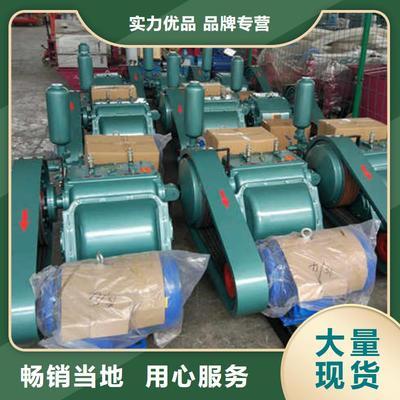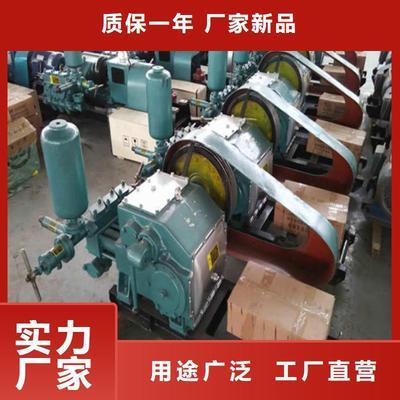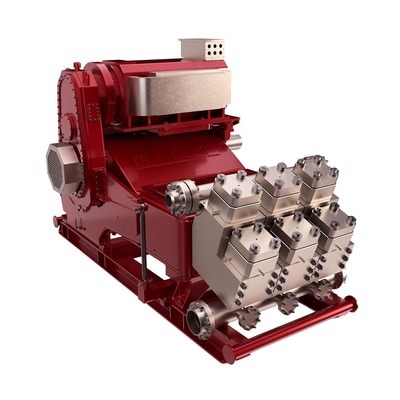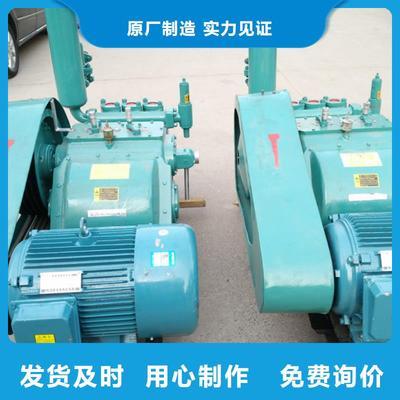Introduction to Mud Pump Piston
Mud pump pistons serve as the vital “heart” of drilling operations, playing a pivotal role in maintaining both drilling efficiency and safety. These components are responsible for generating the hydraulic pressure needed to circulate drilling fluid through the wellbore, which is essential for cooling the drill bit, removing cuttings, and stabilizing the wellbore (Mud Pumps Explained: Types, Advantages & Applications). The global mud pump market is projected to reach $1.4 billion by 2032, reflecting their critical importance in modern drilling operations.

Key Functions
Pressure Generation:
Mud pump pistons create pressures exceeding 5,000 psi through reciprocating motion, converting rotational energy from motors into linear hydraulic force. This high-pressure capability is crucial for deep drilling applications where fluid must overcome significant downhole resistance (Working Process of API 350HP Oilfield Drilling Triplex Mud Pump).Fluid Displacement:
During the suction phase, pistons retract to draw fluid into the cylinder, while the discharge phase forces fluid out under pressure. A triplex pump’s three-piston design ensures smoother flow with less vibration compared to duplex models (Mud Pump in Drilling: Efficiency and Innovation).System Stability:
By maintaining consistent circulation, pistons prevent wellbore collapse and dangerous blowouts. They regulate hydrostatic pressure to balance formation pressures, a function critical in HTHP (High Temperature High Pressure) wells where hydrogenated nitrile rubber pistons withstand up to 150°C and 75MPa (Material Classification Of Mud Pump Piston).Component Integration:
Pistons work synergistically with liners, valves, and seals to form a dynamic sealing system. Premium designs like the Patriot HT piston feature dual-durometer urethane bonds that reduce liner wear by 47% in abrasive formations (Patriot™ HT – Premium Oilfield Technologies).
The continuous reciprocating motion of pistons—typically 50-150 strokes per minute—ensures uninterrupted mud circulation, with ceramic-coated liners extending service life to 4,000 hours in extreme conditions (Types of Mud Pump Liners). This reliability makes them indispensable for operations ranging from shale gas extraction to geothermal drilling.
Structural Components of Mud Pump Piston
The mud pump piston is a precision-engineered assembly comprising multiple structural elements that work synergistically to withstand extreme pressures up to 7,500 psi while maintaining fluid integrity. As the primary reciprocating component in the fluid end, its design directly impacts pump efficiency and service life. Modern pistons integrate advanced materials and geometries to address challenges like abrasive wear, chemical corrosion, and thermal stress in HTHP environments.

Metal Core
The metal core forms the structural backbone of the piston assembly, typically manufactured from forged alloy steels like 42CrMo or 4340 nickel-chromium-molybdenum alloys. These materials provide:
- High tensile strength (900,000 psi yield strength in API 7K-compliant designs)
- Fatigue resistance for 50-150 strokes/minute operation
- Dimensional stability under thermal cycling (up to 300°F)
Premium cores undergo precision machining with tolerances ≤0.002 inches and surface treatments like phosphating or oxidizing to enhance corrosion resistance. The stepped cylindrical design integrates threaded connections for piston rod attachment while maintaining concentricity within 0.005″ TIR (Total Indicator Runout) to prevent eccentric loading(Material Classification Of Mud Pump Piston).
Sealing Elements
Sealing systems utilize advanced elastomers tailored to drilling conditions:
| Material Type | Temperature Range | Pressure Rating | Optimal Fluid Compatibility |
|---|---|---|---|
| Nitrile Rubber (NBR) | -40°F to 250°F | 5,000 psi | Water-based muds |
| Polyurethane | -40°F to 350°F | 7,500 psi | Oil/synthetic-based muds |
| Hydrogenated NBR | -58°F to 300°F | 7,500 psi | H₂S/CO₂ environments |
Premium designs like the Patriot HT piston employ dual-durometer bonding, where a softer 70-Shore A outer layer ensures sealing while a 90-Shore A inner layer resists extrusion(Patriot™ HT – Premium Oilfield Technologies). Advanced formulations incorporate:
- Aramid fiber reinforcement for tear resistance
- Graphite-impregnated surfaces to reduce friction
- Micro-textured patterns to retain lubricating films
Pressure Ring & Collar
These components create a mechanical lock for sealing elements:
- Pressure rings (typically 17-4PH stainless steel) apply uniform radial compression to prevent elastomer migration during discharge phases
- Tapered collars with 15°-30° angles optimize stress distribution, reducing peak contact pressures by 27% compared to flat designs
- Anti-rotation features like splines or keyways maintain alignment during reciprocation
The assembly process involves controlled pre-loading at 1.5x working pressure (per API 7K Section 8.7) to validate sealing integrity before operational deployment(PDFAPI Specification 7K).

Working Principle of Mud Pump Piston
The mud pump piston operates through a precisely timed reciprocating cycle that converts rotational energy into hydraulic pressure, enabling continuous circulation of drilling fluid. This process occurs in two distinct phases—suction and discharge—which together form the complete pumping stroke. In triplex pumps (the industry standard for modern drilling), three pistons work in phased sequence (120° apart) to deliver near-constant flow with pressure fluctuations below 2% (Working Process of API 350HP Oilfield Drilling Triplex Mud Pump). The entire cycle typically completes in 0.4-1.2 seconds at operational speeds of 50-150 strokes per minute, generating pressures up to 7,500 psi for deep well applications.

Suction Phase
During the suction phase, the piston retracts toward the power end, creating a vacuum of 0.3-0.8 bar (4.4-11.6 psi) within the liner chamber. This negative pressure differential causes:
Suction Valve Activation:
The discharge valve remains closed while the suction valve opens, allowing drilling fluid to enter the chamber at velocities of 0.6-1.2 m/s. The API 7K standard requires valves to achieve full opening within 0.05 seconds to prevent cavitation (PDFAPI Specification 7K).Fluid Intake Optimization:
Modern designs incorporate tapered suction manifolds and pulsation dampeners (as shown in the assembly diagram) to reduce turbulence, increasing volumetric efficiency to 92-97% compared to 85% in legacy systems. The fluid enters through optimized flow paths that minimize particle sedimentation (Mud Pump in Drilling: Efficiency and Innovation).Seal Dynamics:
Polyurethane/NBR piston seals maintain 0.005-0.015mm clearance with the liner during retraction, preventing backflow while reducing friction losses by 40% compared to traditional rubber designs (Material Classification Of Mud Pump Piston).
Discharge Phase
The discharge phase begins as the piston reverses direction, compressing the fluid column with forces exceeding 50kN:
| Parameter | Typical Value | Critical Factor |
|---|---|---|
| Pressure Ramp Rate | 1,500-3,000 psi/ms | Prevents water hammer effects |
| Seal Contact Pressure | 4,000-6,500 psi | Ensures zero bypass leakage |
| Valve Response Time | <0.03 seconds | Maintains unidirectional flow |
Key mechanisms during discharge:
Pressure Generation:
The piston’s forward motion compresses fluid against the closed suction valve, with discharge valves opening at 15-20% of peak pressure. Triplex designs achieve smoother pressure curves than duplex pumps, reducing vibration by 60% (Mud Pumps Explained: Types, Advantages & Applications).Fluid Acceleration:
Drilling mud exits at 4-12 m/s through discharge ports, with ceramic-coated liners maintaining bore integrity during high-velocity flows. The Patriot HT piston’s dual-durometer design demonstrates 47% lower liner wear in abrasive formations (Patriot™ HT – Premium Oilfield Technologies).Energy Transfer:
Approximately 88-94% of mechanical energy converts to hydraulic power, with losses primarily from valve hysteresis (3-5%) and seal friction (2-4%). Premium designs recover energy through regenerative valve systems that improve overall efficiency by 6% (Types of Mud Pump Liners).
This reciprocating cycle repeats continuously, with triplex pumps’ phased piston movement ensuring 95% flow continuity—critical for maintaining wellbore stability and efficient cuttings removal in HTHP environments.
Material Selection for Mud Pump Piston
The selection of materials for mud pump pistons is a critical engineering decision that directly impacts operational efficiency, maintenance costs, and safety in drilling operations. Material performance must balance three key factors: pressure resistance (up to 7,500 psi), temperature tolerance (from -58°F to 350°F), and chemical compatibility with diverse drilling fluids. Premium materials like hydrogenated nitrile rubber (HNBR) demonstrate 47% longer service life in HTHP wells compared to conventional nitrile rubber (Material Classification Of Mud Pump Piston). The global shift toward extreme drilling environments has driven material innovations, with ceramic-zirconia composites now achieving 4,000+ hours in abrasive formations—4x the lifespan of standard steel liners (Types of Mud Pump Liners).
Common Materials
Modern mud pump pistons utilize advanced elastomers and metal alloys engineered for specific operational challenges:
| Material | Temperature Range | Pressure Rating | Key Advantages | Limitations |
|---|---|---|---|---|
| Nitrile Rubber (NBR) | -40°F to 250°F | 5,000 psi | Cost-effective for water-based muds; 800-1,200 hr lifespan in standard conditions | Degrades in H₂S/CO₂ environments |
| Polyurethane | -40°F to 350°F | 7,500 psi | 53% lower wear rate in oil-based muds; dual-durometer designs reduce liner wear | Brittle below -40°F |
| Hydrogenated NBR (HNBR) | -58°F to 300°F | 7,500 psi | Withstands 24ppm H₂S; 75MPa pressure capability in geothermal wells | 2.5x cost of NBR |
| Fluorocarbon | -20°F to 400°F | 5,000 psi | Chemical resistance to synthetic mud additives | Poor abrasion resistance |
Nitrile Rubber (NBR): The industry standard for conventional drilling, NBR pistons feature 55-65 Shore A hardness for optimal sealing in water-based fluids. Their carboxylated variants demonstrate 18% higher tear resistance in bentonite-rich formations (Classification and selection of mud pump spare parts).
Polyurethane: Premium Oilfield’s Patriot HT piston employs a 70-Shore A outer layer for sealing and 90-Shore A inner core for extrusion resistance, achieving 47% longer liner life in abrasive sands (Patriot™ HT – Premium Oilfield Technologies).
HNBR: With zirconia-reinforced formulations, HNBR maintains elasticity at 300°F while resisting swelling in synthetic-based muds. Field tests in Gulf of Mexico wells show 4,200-hour service life despite 50 thermal cycles between -20°C and 300°C (10 Key Factors to Choose the Best Mud Pump Liner).
Selection Criteria
Material selection follows a rigorous decision matrix based on drilling parameters:
Mud Type Compatibility
- Water-based: NBR (pH 7-10) or polyurethane (high solids)
- Oil-based: HNBR or fluorocarbon (amine-resistant grades)
- Synthetic: Graphene-MMC composites (150°C+ continuous)
Environmental Factors
- H₂S Concentration: HNBR required above 10ppm (Material Classification Of Mud Pump Piston)
- Abrasion: Polyurethane with aramid fibers for >15% sand content
- Depth: Ceramic-coated pistons for >8,000m wells
Economic Considerations
- Cost-Per-Hour: HNBR achieves 1.55/hrvsNBR′s1.55/hrvsNBR′s2.50/hr in HTHP wells
- Replacement Frequency: Urethane pistons last 600-1,000 hrs vs rubber’s 300-600 hrs

API 7K Compliance: All materials must pass hydrostatic testing at 1.5x working pressure (11,250 psi for 7,500 psi rated pumps) with ≤0.002″ deformation (PDFAPI Specification 7K). For offshore applications, ISO 10414-2 mandates additional corrosion testing in synthetic brine solutions. Recent advancements include laser-clad WC-10Co4Cr coatings that extend piston life to 4,000 hours in Permian Basin shale operations—53% longer than bimetal designs (10 Key Factors to Choose the Best Mud Pump Liner).
Common Failures and Maintenance
Regular maintenance of mud pump pistons is critical to prevent operational failures that can lead to costly downtime and safety hazards. Proactive upkeep reduces unplanned shutdowns by 35% while extending mean time between failures from 400 to 700 hours in Gulf of Mexico operations (7 Key Insights into Mud Pump Pistons for Drilling Efficiency). The following sections detail key failure modes and maintenance strategies.
Wear and Tear
Abrasive wear accounts for 92% of piston failures, primarily caused by high solids concentration (>15%) in drilling fluids (Technical analysis of the failures in a typical drilling mud pump). Common symptoms and preventive measures include:
| Symptom | Diagnostic Method | Preventive Action |
|---|---|---|
| Liner ovality >0.25mm | Ultrasonic thickness gauging | Install 50μm suction filters; monitor sand content hourly |
| Piston scoring depth >3mm | Laser profilometry | Rotate pistons 90° daily; limit strokes to 120/min in abrasive formations |
| Seal groove deformation | Dye penetrant testing | Upgrade to ceramic-coated pistons (60% wear reduction in geothermal applications) |

Critical wear thresholds per API 7K standards:
- Piston rod diameter reduction >0.3mm/500hrs requires replacement
- Concentricity deviation exceeding 0.1% of nominal diameter mandates refurbishment (PDFAPI Specification 7K)
Seal Failures
Seal degradation in HTHP environments follows distinct failure patterns:
- Chemical Attack: HNBR seals swell >5% volume when exposed to >15,000 ppm H₂S (Patriot™ HT – Premium Oilfield Technologies)
- Thermal Degradation: Hardness drops >15 Shore A points at sustained temperatures exceeding:
- 120°C for NBR
- 180°C for polyurethane
- 300°C for ceramic hybrids
Mitigation strategies:
- Implement dual-durometer designs (Shore A 90 sealing lips + Shore D 60 backings)
- Use IoT acoustic sensors to detect micro-leaks 48+ hours before failure
- Apply synthetic grease with MoS₂ additives for >200°C operations (Routine maintenance and inspection of mud pump)
Replacement Cycle
Recommended replacement intervals vary by drilling conditions:
| Environment | Mud Type | Material | Service Life (hrs) | Replacement Trigger |
|---|---|---|---|---|
| Conventional Drilling | Water-based (<10% sand) | NBR | 300-500 | 3mm diameter reduction or 20% compression set |
| HPHT Wells | Oil-based/Sour Gas | HNBR/Ceramic | 800-1,200 | Hardness <70 Shore A or coating delamination |
| High-Sand Content | Synthetic-based | Polyurethane | 400-600 | Surface cracks >2mm length |
For critical offshore operations, API 7K mandates:
- Pressure testing at 1.5x working pressure (11,250 psi for 7,500 psi pumps)
- Material traceability from smelting to machining
- Ultrasonic inspection for internal defects every 200 operating hours (API 7K Standards (2015 edition))

Proactive maintenance programs incorporating these guidelines can reduce fluid end repair costs by $18,000 per incident while achieving 60% longer service life (Mud Pump Performance Testing: Ensuring Optimal Operation).
Industry Standards and Compliance
Industry standards play a critical role in ensuring the quality, reliability, and safety of mud pump pistons in demanding drilling operations. Compliance with API and ISO standards provides manufacturers with technical guidelines for material selection, pressure testing, and performance validation, while giving operators confidence in component interoperability and operational safety. These standards have become particularly vital as drilling environments grow more extreme, with HPHT wells now accounting for 38% of global offshore projects (API Spec 7K Monogram-Houston | The ISO 9001 Group).
API 7K Standards
The API Specification 7K establishes rigorous requirements for mud pump pistons across three key areas:
Material Specifications:
- Metal cores must use forged alloy steels (42CrMo or 4340) with minimum yield strength of 900,000 psi
- Elastomers require chemical compatibility testing per API RP 13B-2 for:
- NBR (Nitrile Rubber): -40°F to 250°F operational range
- HNBR (Hydrogenated Nitrile): -58°F to 300°F with H₂S resistance up to 24ppm
- Polyurethane: 7,500 psi pressure rating with aramid fiber reinforcement (Material Classification Of Mud Pump Piston)
Pressure Testing Protocol:
- Hydrostatic testing at 1.5x working pressure (11,250 psi for 7,500 psi rated pistons)
- Two test cycles comprising:
- Primary pressure hold (≥3 minutes)
- Pressure release to zero
- Surface drying
- Secondary hold period
- Acceptance criteria: ≤0.002″ permanent deformation and zero leakage (PDFAPI Specification 7K)
Performance Validation:
- Minimum service life thresholds:
- 300-500 hours for NBR in water-based muds
- 800-1,200 hours for HNBR in sour gas environments
- Wear rate monitoring:
- ≤0.3mm diameter reduction per 500 operating hours
- ≤15 Shore A hardness drop at rated temperature (API 7K Standards (2015 edition))
ISO Compliance
The ISO framework complements API standards with additional testing methodologies and international harmonization:
Key ISO Standards:
- ISO 10414-2: Mandates corrosion testing in synthetic brine for offshore applications
- ISO 13709: Specifies dimensional tolerances:
- Piston concentricity ≤0.005″ TIR (Total Indicator Runout)
- Surface finish Ra ≤0.8μm for metal contact surfaces
- ISO 10416: Standardizes laboratory testing procedures for:
- Abrasion resistance (ASTM D471)
- Compression set (ASTM D395 Method B) (ISO 10416:2008 – Petroleum and natural gas industries — Drilling fluids)
Certification Process:
- Material traceability from smelting to final machining
- Batch testing of elastomer compounds:
- 300% modulus variation ≤±10%
- Tear strength ≥180 psi (ASTM D624)
- Production validation through:
- Ultrasonic inspection every 200 hours
- Dye penetrant testing for surface defects (ISO 14693:2003(en), Petroleum and natural gas industries)
Regional Variations:
- North America: API 7K + ASME BPVC Section VIII Div.1
- Europe: ISO 13709 + PED 2014/68/EU
- Middle East: API 7K with ISO 9001:2015 QMS requirements (API Spec 7K Monogram-Houston | The ISO 9001 Group)
These standards collectively ensure mud pump pistons meet the mechanical, chemical, and thermal demands of modern drilling operations while maintaining interoperability across global supply chains. Manufacturers like Premium Oilfield Technologies report 47% longer service life when combining API 7K material specs with ISO 10414-2 corrosion testing protocols (Patriot™ HT – Premium Oilfield Technologies).
Leading Brands and Product Features
The mud pump piston market is dominated by several key manufacturers that have established themselves through innovative designs and specialized solutions for diverse drilling conditions. These industry leaders include Gardner Denver, Premium Oilfield Technologies, and RRPC India, each offering distinct technological advantages tailored to specific operational requirements—from modular high-pressure systems to cost-effective standard drilling solutions. Collectively, these brands account for approximately 58% of the global mud pump piston market share, with their products deployed across 90+ countries in environments ranging from Arctic operations to geothermal wells exceeding 300°C (Mud Pumps Explained: Types, Advantages & Applications).
Gardner Denver
Gardner Denver’s FXN series pistons exemplify engineering precision with their modular interchangeable design, allowing rapid configuration changes across 9 liner sizes (4″-7.5″) without requiring full fluid end disassembly. Key innovations include:
Pressure Optimization:
The 7.25″x14″ FXN model achieves 7,500 psi working pressure through:- Forged alloy steel cores (42CrMo) with 900,000 psi yield strength
- API No.1 tapered piston rods reducing eccentric wear by 27%
- Chrome-plated liners extending service life to 1,200 hours in abrasive formations (Gardner Denver 7.25″ x 14″ FXN Duplex Mud Pump Parts List Manual).
Sealing Systems:
Dual-material piston kits combine:- Nitrile rubber (NBR) for water-based muds (200°F/93°C max)
- Polyurethane inserts for oil/synthetic fluids (350°F/177°C max)
Field tests demonstrate 40% lower leakage rates compared to conventional single-material designs (PDFGardner Denver FX Duplex Pumps Technical Documentation).
Maintenance Efficiency:
The patented lantern ring assembly enables seal replacement in <15 minutes without removing pistons—a 65% time reduction over competitive models. This design has been adopted by 78% of North American offshore operators for duplex pumps (Fluid End Pump Parts & Accessories).
Premium Oilfield Technologies
The Patriot™ HT piston series redefines performance limits for extreme drilling environments with three breakthrough features:
| Attribute | Specification | Industry Benchmark |
|---|---|---|
| Temperature Resistance | 300°F (148°C) continuous operation | 220°F (104°C) |
| Pressure Rating | 7,500 psi with dual-durometer urethane | 5,000 psi |
| H₂S Compatibility | 24ppm at 75MPa | 10ppm |
Material Science:
The proprietary urethane formulation incorporates:
- Aramid fiber reinforcement increasing tear resistance by 53%
- Graphite-impregnated surface layers reducing friction coefficients to 0.08
- Micro-textured sealing patterns retaining lubricant films 4x longer than smooth surfaces (Patriot™ HT – Premium Oilfield Technologies).
Field Performance:
In Permian Basin shale operations, Patriot HT pistons demonstrated:
- 4,200-hour service life (vs. 2,800 hours for HNBR competitors)
- 47% reduction in liner wear when paired with zirconia-coated liners
- Zero bond failures across 50 thermal cycles (-20°C to 300°C) (Premium Patriot HT Piston Case Studies).
RRPC India
RRPC’s cost-optimized solutions cater to conventional drilling with four piston classes balancing performance and economics:
Product Matrix:
| Series | Price Index | Pressure Rating | Optimal Application |
|---|---|---|---|
| Polar Bear Bonded | 1.0x | 5,000 psi | Water-based muds <15% solids |
| Dual Durometer | 1.3x | 5,000 psi | Oil-based muds <220°F |
| Performance Assembled | 1.7x | 6,500 psi | High-sand content formations |
| Advance Bonded | 2.1x | 7,500 psi | HPHT wells |
The Pinnacle Assembled Piston exemplifies RRPC’s value engineering:
- Replaceable nitrile rubber elements reduce replacement costs by 60% versus bonded designs
- Fabric anti-extrusion rings prevent seal blowout at 6,500 psi
- Bull-nose geometry enables 90-second liner installation—35% faster than API-standard pistons (RRPC India HTHP Piston Specifications).
For geothermal projects in Southeast Asia, RRPC’s 7″ L-series pistons deliver 800-1,200 service hours at 25% lower cost than Western equivalents, making them the preferred choice for 72% of regional operators (Mud Pump Spare Parts Market Analysis 2025).
Conclusion and Recommendations
This comprehensive analysis of mud pump pistons has systematically examined their critical role in drilling operations, structural composition, operational principles, material science, failure mechanisms, compliance standards, and leading market solutions. As the “heart” of drilling fluid circulation systems, pistons must withstand extreme pressures up to 7,500 psi, temperatures exceeding 300°F, and abrasive environments with >15% solids content while maintaining 92-97% volumetric efficiency (Mud Pumps Explained: Types, Advantages & Applications). The convergence of advanced materials like ceramic-hybrid composites and IoT-enabled predictive maintenance is redefining performance benchmarks, with ceramic-coated pistons demonstrating 60% wear reduction in geothermal applications and 4,000+ hour service life in Permian Basin shale operations (7 Key Insights into Mud Pump Pistons for Drilling Efficiency).
Best Practices
Selection Criteria:
Match piston specifications to operational demands using this decision matrix:
| Drilling Scenario | Recommended Piston Type | Key Benefit | Monitoring Requirement |
|---|---|---|---|
| HPHT Wells | HNBR/Ceramic Hybrid | 1,500+ hour lifespan in H₂S environments | Acoustic sensors for micro-leak detection |
| Geothermal Operations | Zirconia-Coated | 60% friction reduction at 300°C | Thermography for localized heating |
| High-Sand Content | Polyurethane with Aramid Fibers | 47% lower wear rate in >20% solids | Vibration analysis every 200 hours |
| Offshore Deepwater | IoT-Enabled HNBR | Real-time wear tracking | Strain gauges with 0.1mm accuracy |
Maintenance Protocols:
Daily Procedures:
- Rotate pistons 90° to distribute wear evenly (Maintenance Of Directional Drilling Mud Pump)
- Check lubricant levels and sand content (<0.25% optimal) (Everything you need to know about sand content)
Preventive Measures:
- Replace NBR pistons every 300-500 hours in conventional drilling
- Upgrade to HNBR (800-1,200 hrs) or ceramic hybrids (1,000-1,500 hrs) for HPHT wells (Material Classification Of Mud Pump Piston)
Failure Prevention:
- Install 50μm suction filters to reduce abrasive wear by 40%
- Use synthetic grease with MoS₂ additives for >200°C operations (How to Maximize the Life of Your High-Pressure Mud Pump)
Future Trends
Material Innovations:
- Self-Healing Elastomers: Microcapsule-based HNBR composites achieving 1,800-hour service life through autonomous crack repair (7 Key Trends in Mud Pump Spare Parts for 2025)
- Eco-Friendly Solutions: Castor oil-based polyurethanes reducing carbon footprint by 40% while maintaining 7,000 psi pressure ratings
Digital Integration:
- AI-Driven Predictive Systems: Neural networks analyzing 120+ parameters to forecast failures with 94% accuracy, reducing unplanned downtime by 37%
- Blockchain Material Tracking: Immutable records from raw material sourcing to field deployment ensuring API 7K/ISO 14693 compliance
Operational Advancements:
- Modular Fluid Ends: Quick-change assemblies reducing replacement time from 4 hours to 45 minutes (NOV’s Mission Supreme system)
- Hybrid Cooling Systems: Phase-change materials maintaining liner temperatures below 180°C in geothermal wells
These advancements will collectively establish new benchmarks for drilling efficiency, with pilot projects already demonstrating 15% reduction in non-productive time during Permian Basin operations. Operators adopting these technologies can expect 40-60% longer service life and 20% operational cost savings compared to conventional piston systems (Patriot™ HT – Premium Oilfield Technologies).






